Standard Operating Procedure (SOP) for the Use of Above Ground Burial to Manage Catastrophic Livestock Mortality in Non-Disease Situations
ID
APSC-178NP
Catastrophic losses of livestock from diseases or natural disasters represents a significant challenge for livestock producers and emergency responders. Animal losses often cause significant financial losses to the farmers who rely on the income from these animals. Compounding the financial impact of these animal losses is the burden of responsibly disposing of the resulting animal carcasses. Improperly managed, animal carcasses have the potential to spread disease and contaminate surface and groundwater supplies.
Above Ground Burial (AGB) has been field tested in nine trials in the United States (see Figure 1. Above Ground Burial field trial at the Tidewater AREC).
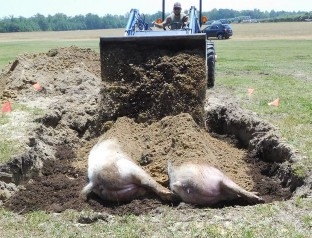
These field tests are exploring carcass degradation, the reduction of vectors, nutrient migration, and pathogen inactivation with this method. Initial results show great promise. At this stage of research, the investigators recommend that AGB implementation proceed cautiously on a limited scale (less than 50 animal units per site) and only in non-disease situations. The investigators should be consulted prior to field implementation in a disaster.
A hierarchy of animal disposal options has been developed to identify environmentally sound animal mortality management methods. The preferred order of mortality management options that should be implemented are:
Hierarchy of Catastrophic Animal Mortality Options
- Rendering
- On-site composting
- Off-site composting
- Landfilling
If these methods are not available or practical, Above Ground Burial (AGB) may be considered for the management of the animal carcasses except during the response to infectious disease events (research is ongoing to determine if AGB is appropriate for disease events). The purpose of this document is to outline the procedures for implementing this method. Incineration and deep burial are methods that should only be considered after all other options have been exhausted.
Site selection
2 feet of separation from the bottom of the trench and the groundwater table
2 feet of separation from the bottom of the trench and bedrock or a restrictive layer
200 feet from wells or springs
100 feet from surface water bodies
50 feet from property lines, sinkholes, or rock outcrops
Construction
- Assess the equipment available to construct the trench and place the animals.
- Dig a 18 to 20-inch deep trench of sufficient width and length to accommodate the number and size of the animals. (See Figure 2. Above Ground Burial) Stockpile the excavated soil at the edge of the trench.
- Place 12-inches of carbonaceous material in the bottom of the trench. The carbon material should have a high carbon to nitrogen ratio such as wood chips, bark mulch, sawdust, corn stalks, straw, silage, and animal bedding with minimal manure.
- Place the carcasses on the carbonaceous base. Care should be taken to ensure the legs and heads can be adequately covered with soil. Animals should be placed as close together as possible. We have observed swine larger than 400 pounds decomposed more slowly than cattle. There is some thought that the thick fat layer might be the cause of this slower decomposition. We are trying both opening the abdomens of the carcasses or placing 4 to 6- inches of carbonaceous material on top of the carcasses to facilitate decomposition. We theorize that the more biologically active the material, the better the decomposition will be (for example, compost may work better than using straight wood chips). We also tried grinding/mixing the carcasses with carbon (in which case the carbon base described in step 3 is not needed).
- Return the 18 to 20-inches of excavated soil to the trench to form a uniform cover over the carcasses. During the field trials that we conducted, returning the excavated soil achieved one foot of cover over the entire carcass (with a little more cover at the top of the mound).
- Seed the mound with a regionally and seasonally appropriate seed mix. Where available, cover with a biodegradable erosion control netting. The netting should extend beyond the edge of the mound and be secured with soil. If not available, cover with a layer of straw or hay mulch.
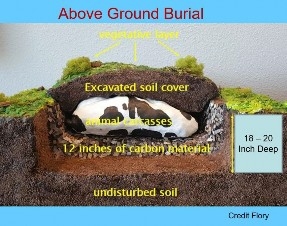
Maintenance
Inspect the AGB system weekly for the first month to identify and address cracks in the soil cover or evidence of animal burrowing. Additional soil should be added to fill cracks and areas where animals may have burrowed.
Site Restoration
After 12 months, the mound can be regraded and return to its original land use. Any bones remaining on the soil surface can be collected and disposed of.
Technical Resources
Bobby Clark, Virginia Cooperative Extension, raclark@vt.edu, 540-459-6140 or 540-333-3227.
Gary Flory, Virginia Department of Environmental Quality, gary.flory@deq.virginia.gov, 540-820-0934.
Bob Peer, Virginia Department of Environmental Quality, robert.peer@deq.virginia.gov, 540-325-2370.
Basic Steps for Above Ground Burial
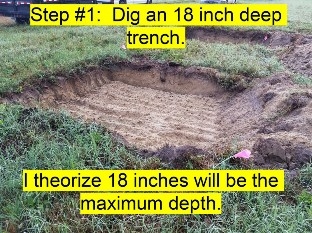
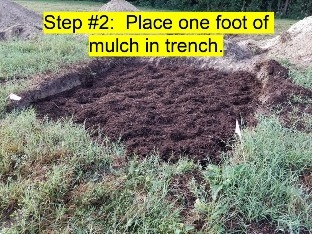
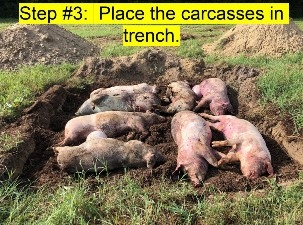
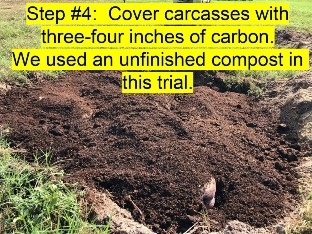
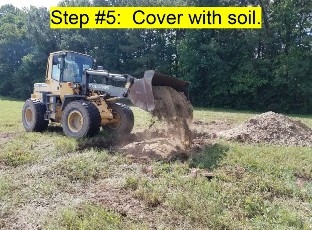
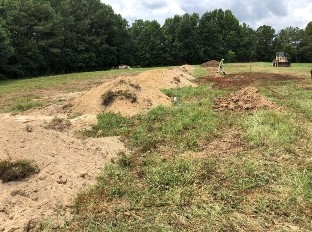
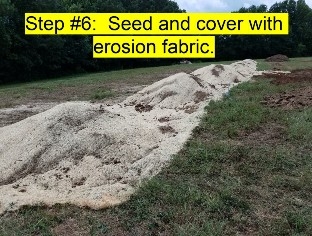
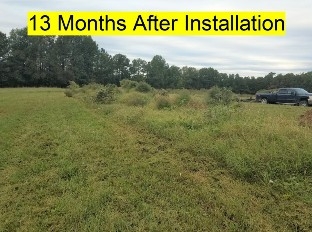
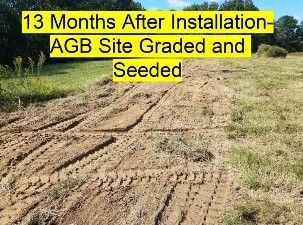
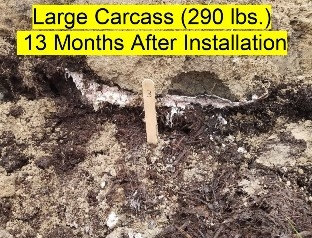
Virginia Cooperative Extension materials are available for public use, reprint, or citation without further permission, provided the use includes credit to the author and to Virginia Cooperative Extension, Virginia Tech, and Virginia State University.
Virginia Cooperative Extension is a partnership of Virginia Tech, Virginia State University, the U.S. Department of Agriculture (USDA), and local governments, and is an equal opportunity employer. For the full non-discrimination statement, please visit ext.vt.edu/accessibility.
Publication Date
August 4, 2021



